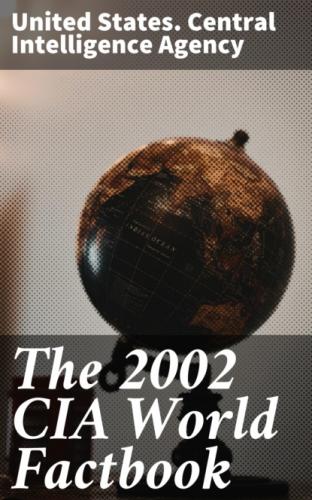Sex ratio: at birth: 1.05 male(s)/female under 15 years: 1.07 male(s)/female 15-64 years: 0.93 male(s)/female 65 years and over: 0.7 male(s)/female total population: 0.93 male(s)/female (2002 est.)
Infant mortality rate: 6.26 deaths/1,000 live births (2002 est.)
Life expectancy at birth: 82.19 years (2002 est.) male: Total fertility rate: 1.8 children born/woman (2002 est.)
HIV/AIDS - adult prevalence rate: NA%
HIV/AIDS - people living with HIV/AIDS: NA
HIV/AIDS - deaths: NA
Nationality: noun: Aruban(s) adjective: Aruban; Dutch
Ethnic groups: mixed white/Caribbean Amerindian 80%
Religions: Roman Catholic 82%, Protestant 8%, Hindu, Muslim, Confucian,
Jewish
Languages: Dutch (official), Papiamento (a Spanish, Portuguese, Dutch,
English dialect), English (widely spoken), Spanish
Literacy: definition: NA total population: 97% male: NA% female: NA%
Government Aruba
Country name: conventional long form: none conventional short form: Aruba
Dependency status: part of the Kingdom of the Netherlands; full autonomy in internal affairs obtained in 1986 upon separation from the Netherlands Antilles; Dutch Government responsible for defense and foreign affairs
Government type: parliamentary democracy
Capital: Oranjestad
Administrative divisions: none (part of the Kingdom of the Netherlands)
Independence: none (part of the Kingdom of the Netherlands)
National holiday: Flag Day, 18 March
Constitution: 1 January 1986
Legal system: based on Dutch civil law system, with some English common law influence
Suffrage: 18 years of age; universal
Executive branch: chief of state: Queen BEATRIX of the Netherlands (since 30 April 1980), represented by Governor General Olindo KOOLMAN (since 1 January 1992) head of government: Prime Minister Nelson O. ODUBER (since 30 October 2001); deputy prime minister NA cabinet: Council of Ministers (elected by the Staten) election results: Nelson O. ODUBER elected prime minister; percent of legislative vote - NA% elections: the monarch is hereditary; governor general appointed for a six-year term by the monarch; prime minister and deputy prime minister elected by the Staten for four-year terms; election last held 28 September 2001 (next to be held by December 2005)
Legislative branch: unicameral Legislature or Staten (21 seats; members elected by direct, popular vote to serve four-year terms) election results: percent of vote by party - MEP 52.4%, AVP 26.7%, PPA 9.6%, OLA 5.7%, Aliansa 3.5%, other 2.1%; seats by party - MEP 12, AVP 6, PPA 2, OLA 1 elections: Judicial branch: Joint High Court of Justice (judges are appointed by the monarch)
Political parties and leaders: Aruba Solidarity Movement or MAS
[leader NA]; Aruban Democratic Alliance or Aliansa [leader NA]; Aruban
Democratic Party or PDA [Leo BERLINSKI]; Aruban Liberal Party or OLA
[Glenbert CROES]; Aruban Patriotic Party or PPA [Benny NISBET]; Aruban
People's Party or AVP [Tico CROES]; Concentration for the Liberation
of Aruba or CLA [leader NA]; People's Electoral Movement Party or MEP
[Nelson O. ODUBER]; For a Restructured Aruba Now or PARA [leader NA];
National Democratic Action or ADN [Pedro Charro KELLY]
Political pressure groups and leaders: NA
International organization participation: Caricom (observer), ECLAC (associate), Interpol, IOC, UNESCO (associate), WCL, WToO (associate)
Diplomatic representation in the US: none (represented by the Kingdom of the Netherlands)
Diplomatic representation from the US: Consul General Barbara J. STEPHENSON embassy: Curacao telephone: [599] (9) 461-3066 FAX: [599] (9) 461-6489
Flag description: blue, with two narrow, horizontal, yellow stripes across the lower portion and a red, four-pointed star outlined in white in the upper hoist-side corner
Economy Aruba
Economy - overview: Tourism is the mainstay of the small, open Aruban economy, with offshore banking and oil refining and storage also important. The rapid growth of the tourism sector over the last decade has resulted in a substantial expansion of other activities. Construction has boomed, with hotel capacity five times the 1985 level. In addition, the reopening of the country's oil refinery in 1993, a major source of employment and foreign exchange earnings, has further spurred growth. Aruba's small labor force and low unemployment rate have led to a large number of unfilled job vacancies, despite sharp rises in wage rates in recent years. The government's goal of balancing the budget within two years will hamper expenditures, as will the decline in stopover tourist arrivals following the 11 September terrorist attacks.
GDP: purchasing power parity - $1.94 billion (2000 est.)
GDP - real growth rate: 2.5% (2000)
GDP - per capita: purchasing power parity - $28,000 (2000 est.)
GDP - composition by sector: agriculture: NA% industry: NA% services: NA%
Population below poverty line: NA%
Household income or consumption by percentage share: lowest 10%: NA% highest 10%: NA%
Inflation rate (consumer prices): 4% (2000)
Labor force: 41,501 (1997 est.)
Labor force - by occupation: most employment is in wholesale and retail trade and repair, followed by hotels and restaurants; oil refining
Unemployment rate: 0.6% (1999 est.)
Budget: revenues: $135.81 million expenditures: $147 million, including capital expenditures of $NA (2000)
Industries: tourism, transshipment facilities, oil refining
Industrial production growth rate: NA%
Electricity - production: 450 million kWh (2000)
Electricity - production by source: fossil fuel: 100% hydro: 0% other: 0% (2000) nuclear: 0%
Electricity - consumption: 418.5 million kWh (2000)
Electricity - exports: 0 kWh (2000)
Electricity - imports: 0 kWh (2000)
Agriculture - products: aloes; livestock; fish
Exports: $2.58 billion (including oil reexports) (f.o.b., 2000)
Exports - commodities: live animals and animal products, art and collectibles, machinery and electrical equipment, transport equipment
Exports - partners: US 42%, Colombia 20%, Netherlands 12% (1999)
Imports: $2.61 billion (f.o.b., 2000)
Imports - commodities: machinery and electrical equipment, crude oil for refining and reexport, chemicals; foodstuffs
Imports - partners: US 63%, Netherlands 11%, Netherlands Antilles 3%,
Japan (1999)
Debt - external: $285 million (1996)
Economic aid - recipient: $26 million (1995); note - the Netherlands provided a $127 million aid package to Aruba and Suriname in 1996
Currency: Aruban guilder/florin (AWG)
Currency code: AWG
Exchange rates: Aruban guilders/florins per US dollar - 1.7900 (fixed rate since 1986)
Fiscal year: calendar year
Communications
